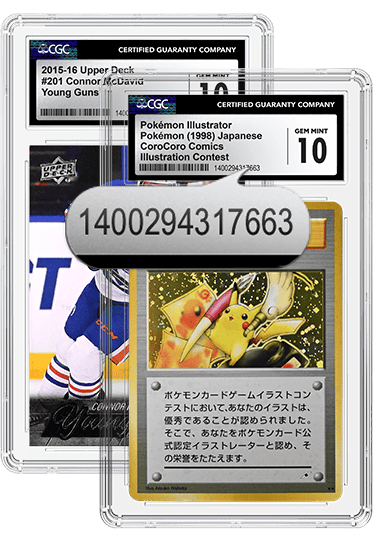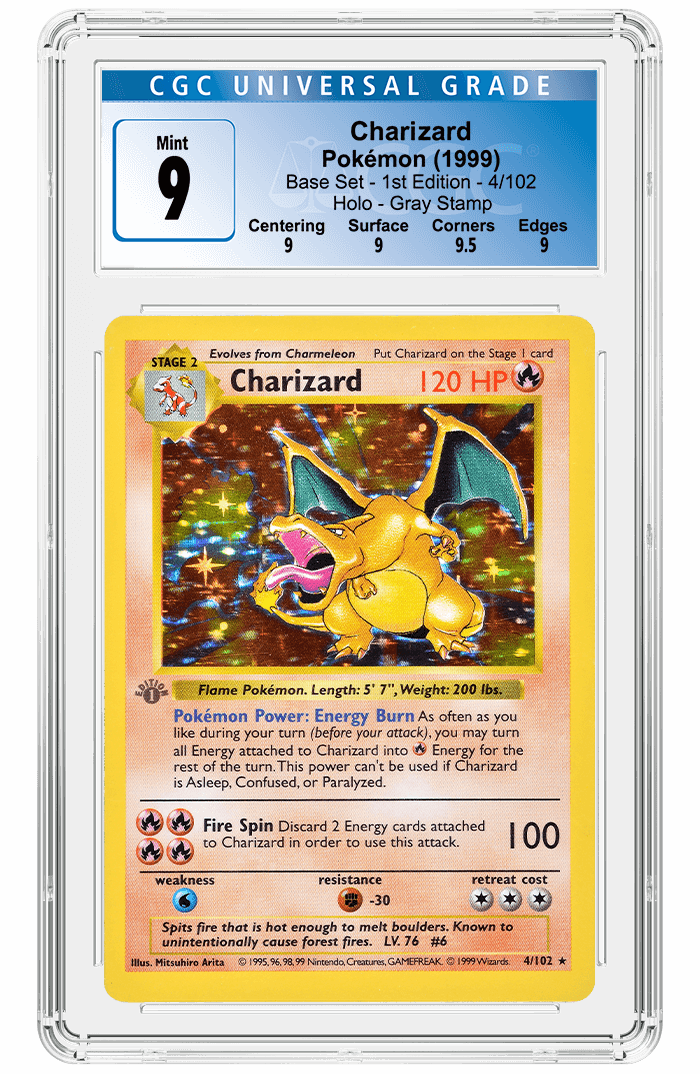Unveiling the Rarest and Most Expensive Magic Cards
Posted on 7/13/2022
It's safe to say no one could have predicted the phenomenon Magic: The Gathering would become when the game was released in 1993. The first two print runs of Magic cards — now known as the Alpha and Beta sets — were produced in limited quantities. Few who bought the cards thought to keep them in Mint condition, and this has created a perfect storm that has increased collectible value of these first print runs in the marketplace.
Trading card makers Wizards of the Coast have also proven to be experts at fostering a strong collector's market. They've marked some of the most popular cards as "reserved." If a card makes it to the Reserved List, it will never be reprinted again. The list is meant to protect the value of the original Magic cards.
Some collectors think the Reserved List has done more than that. They believe it has helped contribute to the eye-popping sales figures the Magic community has seen in the past few years. On the other hand, since the Alpha print run was so small, there were no more than 1,100 copies printed of rare cards like the Black Lotus or Copy Artifact. You could make the argument that Magic cards are so expensive today simply because they have always been rare.
Investment Potential for Magic Cards*
Long-term trends in the value of Magic cards are generally a good indicator of whether any particular card is a good investment. However, collectors and investors should always remember that the collector’s market fluctuates frequently. The prices discussed below have been sourced from news sites around the web and MTGGoldfish, a price tracker for Magic cards. These sources are constantly updated, so it is important to be aware that prices can change on any given day.
With that in mind, here's a look at the rarest and most expensive Magic cards, why collectors covet them and how much they're selling for.
The Rarest and Most Expensive Magic Cards
1993 Magic: The Gathering Black Lotus – Alpha ($540,000) + Beta Artist Proof ($615,000)
In the world of Magic cards, the Black Lotus is at the very peak of collectability and value. With only 1,008 cards printed in the Alpha set and 3,025 in the Beta, this extreme rarity drives the card value sky high. A Black Lotus could be the equivalent of an Action Comics #1 or a Marvel Comics #1 to comic book collectors. We're talking about a 1952 Mickey Mantle in baseball card terms. A Block Lotus is just that iconic.
It became that way not only because of how scarce the card is. It's also a highly prized card in the game. The Black Lotus is an artifact card, which means it can be used by any deck, regardless of color or theme. With the Black Lotus, you can add three mana of any color to your mana pool, a temporary storage space until you're ready to use mana to cast spells.
The Black Lotus is regarded as one of the most powerful cards in all of MTG. The artwork depicts a black lotus flower in full bloom, putting off a mystical vibe. As with many iconic cards, the design is simple and elegant, creating a timeless feel.
With only seven known cards graded in Gem Mint and in 10/10 condition, it's big news when one of them sells. In March 2023, a Gem Mint example from the Alpha set, signed by artist Christopher Rush, sold at auction for $540,000. That sale set a record for the card, but days later, a CGC-graded artist proof Beta version signed by Rush sold for $615,000. Proofs allow the artist to verify that the artwork on the final printed card matches the artist's intent. They don't go into general circulation, making this card a bit different than one that was available to the public.
Post Malone also claims to have purchased a Rush-autographed artist proof example of the Black Lotus for $800,000. Given these sales, it wouldn't be surprising to see a Gem Mint Alpha card sell for even higher prices, as the iconic card could command one million dollars in the future.
1993 Magic: The Gathering Mind Twist – Beta ($208,940)
The Mind Twist is a popular sorcery card that allows one player to force their opponents to discard their hand. If there was ever a card that disrupts strategies, it is the Mind Twist. It can be cast for a relatively low mana cost as well. If you discard the right cards, you can effectively shut down your opponent's game plan.
The card's artwork features a distorted and twisted figure. It's one of MTG's more unique and interesting designs, making the card a long-time collector's favorite.
MTGGoldfish, which tracks sales data for Magic cards across a variety of platforms and auction houses, reports some high-dollar sales for the Mind Twist. They show an example from the Beta set selling for just under $209,000.
1993 Magic: The Gathering Copy Artifact – Beta ($100,000)
When the Copy Artifact card is played, you can create a copy of any other artifact on the battlefield. The strategic possibilities are endless, making this one of MTG's more versatile artifact enchantments.
The Copy Artifact has become extremely popular on the collector's market over time. According to MTGGoldfish, a card from the Beta set has sold for $100,000. The Copy Artifact has also been added to the Reserved List, making it one to keep an eye on going forward.
1993 Magic: The Gathering Mox Ruby – Alpha ($20,975)
The Mox series of cards are famous for allowing players to add to their mana pool. The Mox Ruby card adds to your red mana and lets you bend the "one land per turn" rule. This effectively gives you the ability to cast spells requiring more mana than you have available from your lands.
Combined with a spot on the Reserved List, these features have made Mox Ruby popular with collectors. MTGGoldfish reports an Alpha card selling for just under $21,000. That's enough to put the Mox Ruby on the list of most expensive Magic cards.
1993 Magic: The Gathering Ancestral Recall – Alpha ($20,000)
Along with Black Lotus and Mox Ruby, Ancestral Recall is part of the fabled "Power Nine," a group of MTG's most powerful cards. It allows you to draw three cards for the relatively low cost of one blue mana. You can also make an opponent draw three cards or draw three cards yourself.
This combination of power and chance has made Ancestral Recall a sentimental favorite from the Alpha set. MTGGoldfish reports sales of the rare card right at $20,000.
1993 Magic: The Gathering Time Walk – Alpha ($17,000)
Another member of the Power Nine, the Time Walk card is relatively simple compared to other Magic cards. For the price of two mana, you get a second turn after you complete the one you're currently working on. Two turns in a row can be advantageous at all stages of the game.
The Time Walk card is another collector's favorite from the Alpha set. MTGGoldfish's price trackers show sales of up to $17,000 and links to current listings for even more than that. As prices for the rarest and most expensive Magic cards continue to rise, the collector demand for many of these early favorites from the Alpha set gets stronger.
How Are Magic Cards Graded?
Trading card certifiers use a universal numeric grading system that all dealers, appraisers and collectors recognize. The grades range from ungraded to a Pristine 10.
Grades are calculated according to the following standards:
Pristine 10: The best a card can be, with Gem Mint scores across all four criteria: surface, edges, centering and corners. These cards are perfect even when viewed under 10x magnification.
Gem Mint: Perfect, with bright colors, perfect centering, undamaged edges, sharp corners and no condition or manufacturing issues or flaws.
Grade 9.5: A Near Mint card with one minor flaw or condition issue.
Grade 9: Excellent, with a few minor condition issues or flaws.
Grades 8 and below: These cards are graded lower because of production flaws or condition issues.
Ungraded: Never been graded.
Raw: Just removed from its packaging and new to the market.
Trading card values are determined according to three components: condition, rarity and collector demand. Of the three, collector demand is the most difficult to predict because it can change at any time. A once-desirable card may plummet in value if collectors lose their interest. On the other hand, a more typical card may catapult if collectors suddenly rediscover that player. Escalating auction prices due to bidding wars can also cause card prices to spike. A rare card in Gem Mint condition may be challenging to sell because it commands a premium price, while a lesser-grade card that's more common may suddenly find favor with fans and soar in price.
Before investing, remember that many variables go into determining the value of a Magic card. Obtaining a certified grading is one of the most important things you can do to add value to your cards.
Having your cards graded can make the difference between a particular card being valued for a few dollars and quite a bit more. Grading helps ensure which card you have so that you can accurately assess its value. The grading process also preserves the condition of your card for maximum value. For serious collectors and investors, grading is an essential step for maintaining the long-term value of any given card. To learn more about the grading process for your Magic cards, visit the CGC Cards' site today.
*Any mention of "investment potential" is for entertainment only and should not be construed as investment advice. The Certified Collectibles Group does not provide investment advice and is not liable for any buy, sell or trade decisions made by any parties.
Stay Informed
Want news like this delivered to your inbox once a month? Subscribe to the free CGC eNewsletter today!

